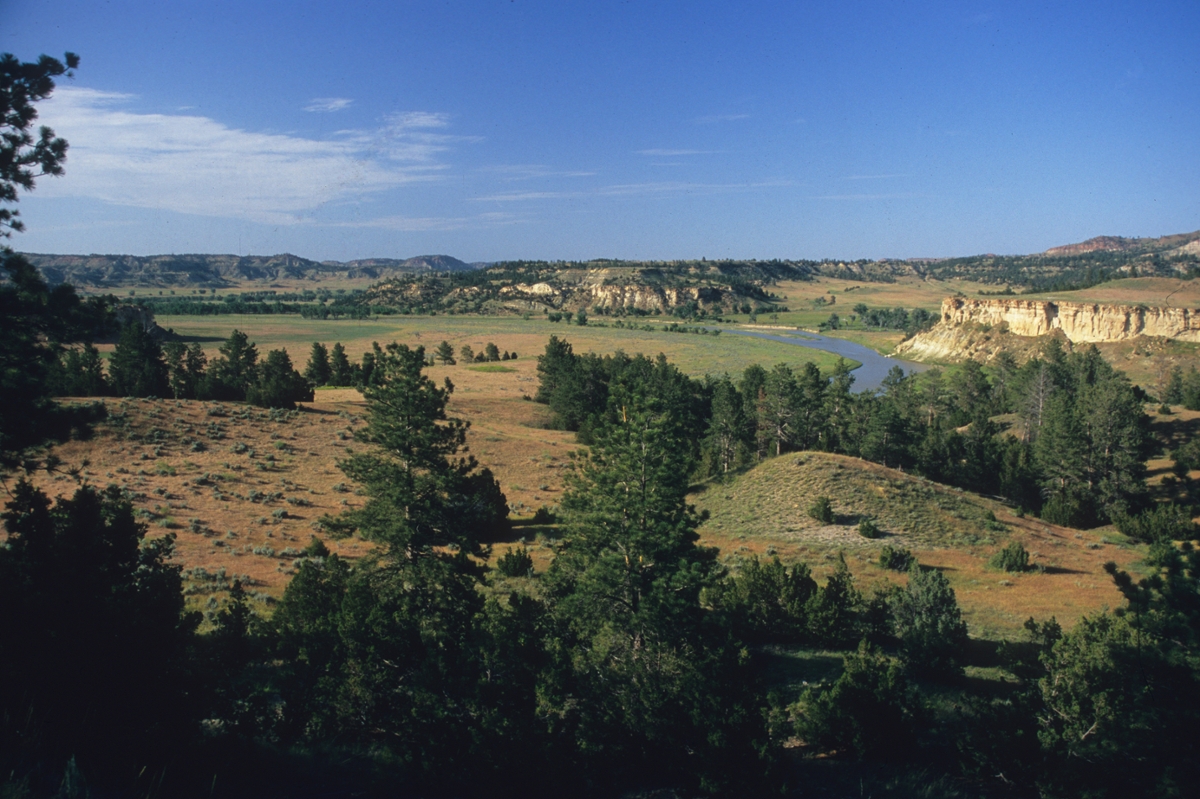Powder River Country Offers Picturesque Montana Prairie
 The Powder River meanders through prairie and rugged badlands in eastern Montana. (Photo by Rick and Susie Graetz)
The Powder River meanders through prairie and rugged badlands in eastern Montana. (Photo by Rick and Susie Graetz)
“A mile wide, an inch deep, too thin to plow and too thick to drink” is as appropriate a portrayal today as it was when the first inhabitants described southeast Montana’s Powder River. In September 1805, French explorer Francois Antoine Larocque wrote, “The current of the river is very strong and the water is so muddy that it is scarcely drinkable. The savages say that it is always thus and that is the reason that they call the river Powder, for the wind rises and carries from the slope a fine sand which obscures and dirties the water.”
The Sioux, Cheyenne and Crow Indians at one time used the Powder River country as their hunting grounds. After the mid-1880's, when the bison were slaughtered and the U.S. Army forced the Indians out of their homelands, large cattle herds were driven north from Texas to graze on the rich grasses in the broad valleys of the Powder. Big cow outfits claimed huge tracts of land, until the legendary winter of 1886-87 virtually wiped out their operations.
Some of the cowhands from these initial ranches stayed on and established smaller places. At the turn of the century, they were joined by a tide of homesteaders. These would-be farmers saw their numbers severely reduced by drought and an economic depression. The steadfast ranchers and homesteaders who managed to hang on formed the backbone of the population of today’s vast Powder River County.
The Powder River that once witnessed “the Old West” now takes it easy as it makes lazy meanders through a quiet landscape of simple beauty. This cowboy domain of widely scattered ranches is dominated by buttes, grassy hills, narrow canyons, a big sky and a cafe au lait-colored, cottonwood-lined waterway.
After the Powder enters Montana from its beginnings in northeast Wyoming, it covers 150 air miles (its twists and turns probably triple the surface distance) before emptying into the Yellowstone 35 miles northeast of Miles City. Picturesque Broadus is the only town it encounters on its journey north.
Named after the Broaddus family, early day settlers in the valley, the town mistakenly lost one of the d’s in its name when the local post office was chartered by Washington, D.C. George and Margaret Trautman founded the town in 1908 when they built a log cabin store. In 1919, Mrs. Trautman donated 80 acres for a town site with the stipulation that Broadus be made the county seat and the streets be “wide enough to turn a team and a wagon around on.”
Probe the Powder to the south of Broadus first. Ask in town how to find the road that heads down the west side of the river. It is about 36 miles of river bend vistas to where you’ll cross the Powder River and come back on the east bank route. Wildflowers in the spring and summer and brush and leaf changes in the fall add color and diversity to the open, rolling landscape. The bottomlands are primarily private, but the hillsides above the roadway are mostly public BLM land.
The northern stretch of the river out of Broadus features badlands topography, especially in its upper reaches. Sunrises and sunsets here are magical in their displays. Follow the Powderville West Road for about 88 miles to Highway 12, east of Miles City. You’ll pass through Powderville, once a lively community and stage stop between Deadwood and Miles City, and now consisting of only a part-time post office. The original town was about a half mile away toward the river.
Both trips listed above are on dirt and gravel roads and are best traveled in dry weather. The ideal time to see the Powder River country is in the fall, spring and early summer. The seasonal colors make for nice prairie photography. Use your maps, especially those published by the BLM, and you will need three of them: Broadus, Powderville and Miles City. The BLM State office phone is 406-255-2888. The Montana Atlas and Gazetteer also will work.
Rick and Susie Graetz | University of Montana | Department of Geography
